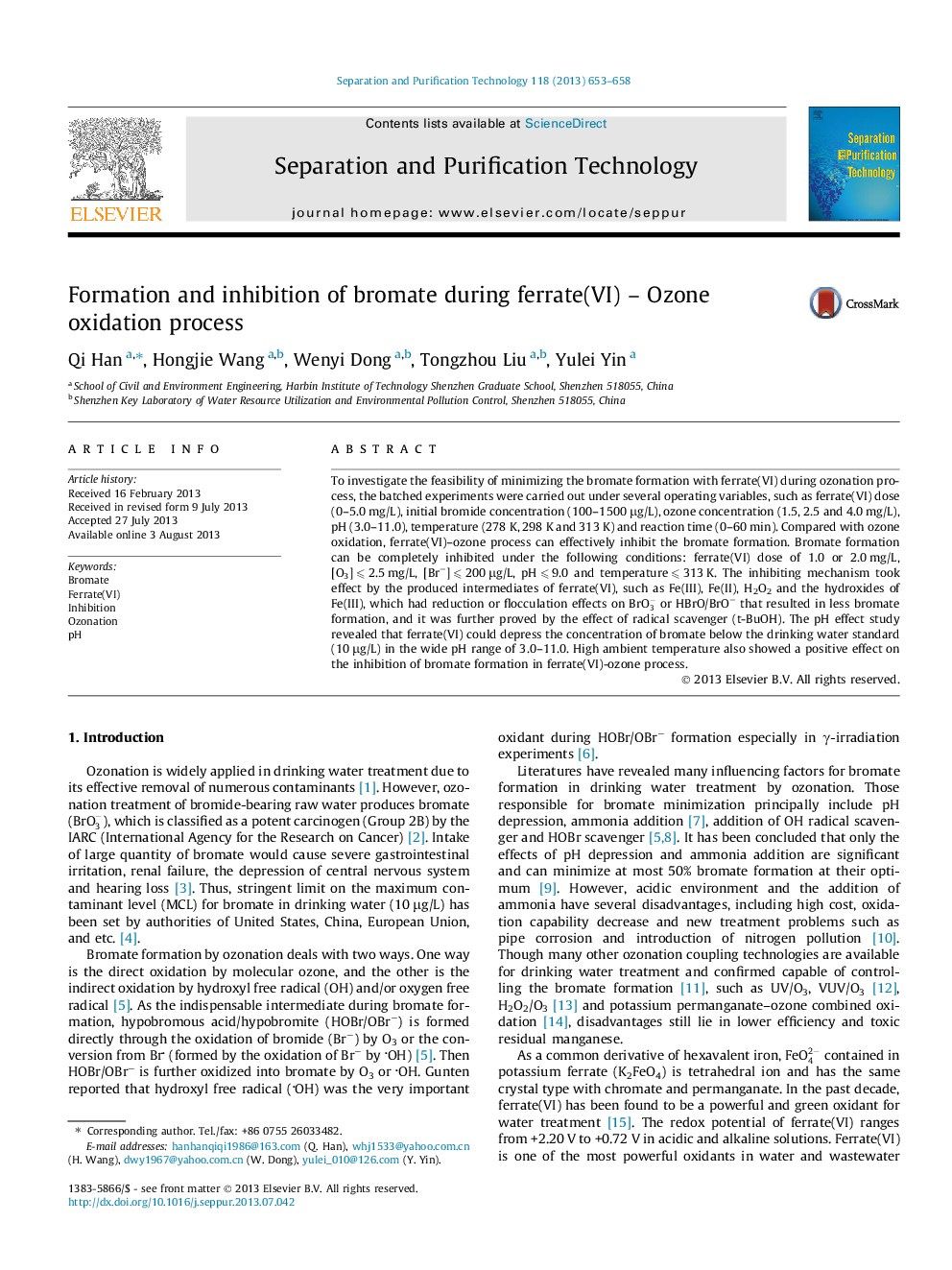| Article ID | Journal | Published Year | Pages | File Type |
|---|---|---|---|---|
| 641551 | Separation and Purification Technology | 2013 | 6 Pages |
•Minimizing of bromate formation by ferrate was studied for the first time.•The mechanism is the combined effects of intermediates on BrO3- and HBrO/BrO−.•Bromate can be effectively inhibited with the increase of ferrate dose.•Ferrate inhibited bromate under the drinking water standard in pH range 3.0–11.0.•Temperature had a positive relationship with the inhibition of bromate formation.
To investigate the feasibility of minimizing the bromate formation with ferrate(VI) during ozonation process, the batched experiments were carried out under several operating variables, such as ferrate(VI) dose (0–5.0 mg/L), initial bromide concentration (100–1500 μg/L), ozone concentration (1.5, 2.5 and 4.0 mg/L), pH (3.0–11.0), temperature (278 K, 298 K and 313 K) and reaction time (0–60 min). Compared with ozone oxidation, ferrate(VI)–ozone process can effectively inhibit the bromate formation. Bromate formation can be completely inhibited under the following conditions: ferrate(VI) dose of 1.0 or 2.0 mg/L, [O3] ⩽ 2.5 mg/L, [Br−] ⩽ 200 μg/L, pH ⩽ 9.0 and temperature ⩽ 313 K. The inhibiting mechanism took effect by the produced intermediates of ferrate(VI), such as Fe(III), Fe(II), H2O2 and the hydroxides of Fe(III), which had reduction or flocculation effects on BrO3- or HBrO/BrO− that resulted in less bromate formation, and it was further proved by the effect of radical scavenger (t-BuOH). The pH effect study revealed that ferrate(VI) could depress the concentration of bromate below the drinking water standard (10 μg/L) in the wide pH range of 3.0–11.0. High ambient temperature also showed a positive effect on the inhibition of bromate formation in ferrate(VI)-ozone process.
